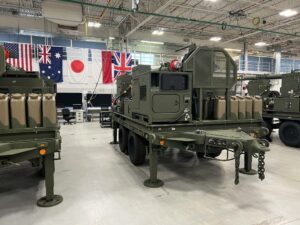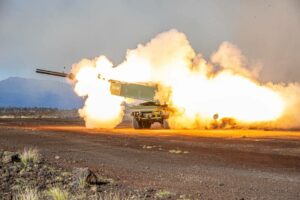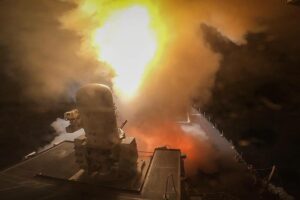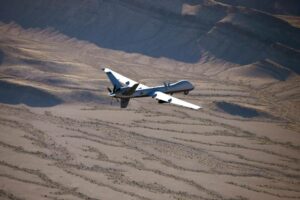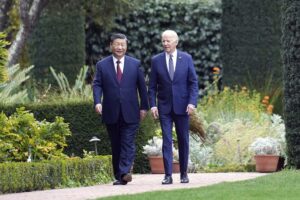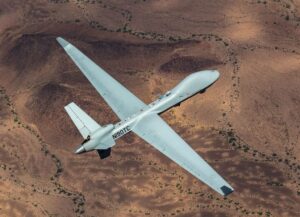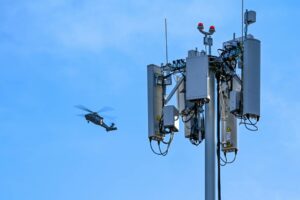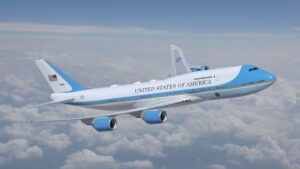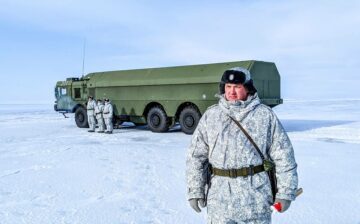
ORLANDO — The U.S. Space Force’s acquisition plan for its next phase of National Security Space Launch contracts reflects a shift toward launching more small satellites in a more diverse range of orbits.
The service announced its approach for what it calls NSSL Phase 3 on Feb. 16, issuing a draft solicitation to allow launch companies to provide feedback before a formal call for proposals this summer. The strategy would establish two provider groups, or “lanes,” with Lane 1 companies competing for less complex, commercial-like missions and those in Lane 2 vying for more stressing launches with unique requirements.
The two-lane approach is a departure from the service’s prior contract, Phase 2, which split all National Security Space Launches between two providers: United Launch Alliance and SpaceX.
Maj. Gen. Stephen Purdy, the director of the Space Force’s launch enterprise, told C4ISRNET this week the Space Force’s approach for Phase 3 — namely the addition of a new lane for emerging launch companies — supports its changing approach to satellite programs.
Rather than launch fleets of a few large, expensive satellites, the service is eyeing what it calls “hybrid architectures.” These fleets of spacecraft feature a mix of small and large satellites in low and high orbits, spreading out what is now a more a consolidated capability. Officials hope this approach will make it harder for an adversary to target its satellites.
The Space Development Agency is leading the service’s shift toward hybrid constellations and Undersecretary of the Air Force for Space Acquisition and Integration Frank Calvelli wants other parts of the Space Force to follow suit.
“The architecture changed a little bit in Phase 3,” Purdy told C4ISRNET in a Feb. 22 interview at the Space Force’s Space Mobility Conference in Orlando. “[Undersecretary] Calvelli has been very vocal about the distributed architecture going forward.”
The acquisition team expects Phase 3 to include up to 70 launches, with about 30 awarded through Lane 1 — which is open to a larger pool of providers — and 40 in Lane 2. Companies in the first lane will have to meet some launch vehicle requirements depending on the type of mission they’re supporting and those in Lane 2 must meet more stringent requirements.
SpaceX and ULA are the only companies that qualify for Lane 2 missions, but Blue Origin, owned by billionaire Jeff Bezos, is in the process of being certified for those launches.
Col. Chad Melone, senior materiel leader for the Space Force’s mission solutions space acquisition delta, told reporters during Feb. 24 phone briefing that while the service is in the early days of its hybrid architecture transition, the Phase 3 acquisition strategy is intended to “make room” for growth — both for companies looking to break into the military launch market and for the Space Force as it increases the resiliency of its satellites.
“We think there is a warfighter benefit to the diversity that we’re going to see in Lane 1,” Melone said. “As much benefit as we think there’s going to be in on-ramping providers and allowing new, emerging providers to compete, we also think that the warfighter benefits from that resiliency and diversity.”
Maintaining a solid base
According to Purdy, when the Space Force was initially contemplating its Phase 3 strategy, it expected to take a sharper turn away from the Phase 2 approach of buying large blocks of launches from a small number of providers.
But moves in the commercial launch market caused the service to reconsider. Purdy said the launch acquisition team watched closely when Amazon in 2021 and 2022 opted to award bulk contracts to three companies to launch large portions of its Project Kuiper broadband internet constellation — an approach that was very similar to the Space Force’s Phase 2 strategy.
He said the service spoke with Amazon about its strategy and those conversations reinforced the benefits of using that approach for a portion of its launches. Buying in bulk reduces launch costs and locks in sub-suppliers, he said.
“When they did that, we realized we need to make sure that we’ve got a solid foundation for our most important missions, for our hardest missions,” Purdy told C4ISRNET. “There was a lot of influence and discussion as a result of that.”
The Space Force plans to award contracts to two Lane 2 companies and expects to have at least three competitors in that group: incumbents ULA and SpaceX and newcomer Blue Origin. Other companies could have their launch vehicles certified prior to the 2024 contract award, but the service hasn’t signed certification agreements with other providers.
Col. Douglas Pentecost, deputy program executive officer for assured access to space, told reporters in the Feb. 24 briefing that both lanes have drawn significant interest from industry. In fact, 27 companies have already signed up for an industry day on Feb. 28.
“There’s a lot of hunger in the industry,” he said.
Courtney Albon is C4ISRNET’s space and emerging technology reporter. She has covered the U.S. military since 2012, with a focus on the Air Force and Space Force. She has reported on some of the Defense Department’s most significant acquisition, budget and policy challenges.
- SEO Powered Content & PR Distribution. Get Amplified Today.
- Platoblockchain. Web3 Metaverse Intelligence. Knowledge Amplified. Access Here.
- Source: https://www.defensenews.com/battlefield-tech/space/2023/02/24/space-force-launch-plan-mirrors-shift-to-smaller-satellites/
- 1
- 10
- 2012
- 2021
- 2022
- 2024
- 28
- 70
- a
- About
- access
- acquisition
- addition
- agreements
- AIR
- Air Force
- All
- Alliance
- Allowing
- already
- Amazon
- and
- approach
- architecture
- assured
- award
- awarded
- before
- being
- benefit
- benefits
- between
- bezos
- billionaire
- Bit
- Blocks
- Blue
- blue origin
- Break
- Briefing
- broadband
- budget
- Buying
- call
- Calls
- caused
- Certification
- Certified
- challenges
- changing
- closely
- commercial
- Companies
- compete
- competing
- competitors
- complex
- Conference
- contract
- contracts
- conversations
- Costs
- could
- covered
- day
- Days
- Defense
- Delta
- Depending
- deputy
- Development
- DID
- Director
- discussion
- distributed
- diverse
- Diversity
- draft
- drawn
- during
- Early
- emerging
- Emerging Technology
- Enterprise
- establish
- Ether (ETH)
- executive
- Executive Officer
- expected
- expects
- expensive
- Feature
- feedback
- few
- First
- Focus
- follow
- Force
- formal
- Forward
- Foundation
- from
- Gen
- going
- Group
- Group’s
- Growth
- High
- hope
- HTTPS
- hunger
- Hybrid
- images
- important
- in
- include
- Increases
- industry
- influence
- initially
- integration
- interest
- Internet
- Interview
- issuing
- IT
- jeff bezos
- Lane
- large
- larger
- launch
- launches
- launching
- leader
- leading
- little
- Locks
- looking
- Lot
- Low
- make
- Market
- Meet
- Military
- Mission
- missions
- mobility
- more
- most
- moves
- namely
- National
- national security
- Need
- New
- next
- number
- Officer
- open
- Origin
- Orlando
- Other
- owned
- parts
- phase
- phone
- plan
- plans
- plato
- Plato Data Intelligence
- PlatoData
- policy
- pool
- Prior
- process
- Program
- Programs
- Proposals
- provide
- provider
- providers
- qualify
- range
- realized
- reconsider
- reduces
- reflects
- Reported
- reporter
- Requirements
- result
- Said
- satellite
- satellites
- security
- senior
- service
- shift
- signed
- significant
- similar
- since
- small
- smaller
- solicitation
- solid
- Solutions
- some
- Space
- Space Force
- spacecraft
- SpaceX
- split
- Spreading
- Stephen
- Strategy
- Suit
- summer
- Supporting
- Supports
- Take
- Target
- team
- Technology
- The
- their
- this week
- three
- Through
- to
- toward
- transition
- TURN
- u.s.
- unique
- United
- vehicle
- Vehicles
- week
- What
- What is
- which
- while
- will
- would
- zephyrnet


